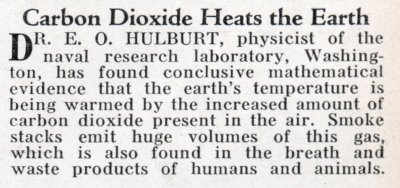
Studies detailing the rough outline of a poison circle around airports could just as well define the boundaries of John Kasarda's aerotropolis, in which sprawling terminals will form the ugly, toxic heart of the community's "central business district."
Fast Company writer Greg Lindsay's defense of this scheme - which is increasingly popular in Asia - is a little miracle of concision:
To the jaundiced American eye, such a project might appear to be the terminal metastasis of the sprawl represented by O'Hare, LAX, or JFK. But to dismiss it as the product of Asia's infatuation with all things mega would be to miss the carefully calibrated machinery underneath.Because, you see, if the underlying machinery of a project is carefully calibrated, then there's clearly no way it could be a product of infatuation, or an example of terminal metastasis.
Or something. Anyway, they're doing it over there, so we'd better do it over here.
There's a bit more to the argument than that, of course. Unfortunately, Kasarda's rhetoric is long on what Lindsay calls "Olympian pronouncements" and short on coherence:
[T]he three essential rules of real estate have changed from 'location, location, location' to 'accessibility, accessibility, accessibility.'I would've thought that location and accessibility were intimately, if not indissolubly, linked. But this is a New World, and I'll gladly admit that some of its subtleties are beyond me.
That said, some of them are beyond Kasarda, too:
He sheepishly concedes that his visions of monstrous highways and multimodal cargo hubs would make Jane Jacobs--the late patron saint of human-scale cities--toss and turn in her grave. But Kasarda has moved beyond the comfy, retro dictates of the New Urbanists. He isn't concerned with "the way we live now" but with the naked realities of how we do business now."Now" being the operative word. The problem is, how we do business now may not be viable even ten years down the road, as Dr. Colin Campbell explains:
Demand for other oil products will make the attainment of 11%, let alone 30%, of crude oil production as jet fuel impossible….An exponential growth rate in passenger traffic of 4.5% and in freight traffic of 5.9% (in accordance with Airbus forecasts) would require an amount of jet fuel impossible to procure.That's on the one hand. On the other is our innate disdain for "comfy, retro dictates." These are soft, limp, drooping things, after all, while multimodal cargo hubs are hard, vigorous, and thrusting. This sort of rhetoric has been falsely associated with a realistic worldview for so long that it now serves as a stand-in for actual realism. Calling New Urbanism "comfy" allows the cognoscenti to ignore not just that particular school of urban planning, but also the underlying crises it hopes - however inadequately - to address.
Thus, we’re supposed to forget that the airline industry is more vulnerable to fuel prices than other transportation sectors, which makes it a very unlikely engine for long-term economic development. We're also supposed to forget that the impatience of those online consumers whom Kasarda (rightly, for once) calls “spoiled” won’t survive an era of $100-a-barrel oil. Kasarda likes to quote D’Arcy Thompson on the tension between growth and form, but conveniently ignores the fact that both these things require an ongoing, affordable source of energy.
Still, you can't let facts stand in the way of progress. Airports must expand, and cities must grow around them according to whatever logistical and aesthetic demands are made by the gods of intermodal efficiency and brand management, respectively. In case there's any doubt on that last point, Kasarda explains how essential branding is to an aerotropolis:
There needs to be a branding of the area, which will require gateway entrances and basically the type of architecture and landscape design that will let people know they're going into the aerotropolis and not just any other area….I figure the noise, the lines, and the security guards will tip them off. Failing that, I'd suggest an arch reading Globalisierung Macht Frei.
Any sense of community pride in Aerotropolis will presumably center on its "seamless" catering to the needs of passengers and cargo, and I imagine its schools will be tolerably good at turning students who are neither too deafened nor too asthmatic into model workers. Meanwhile, David Brooks and Paul Virilio, in their own inimitable ways, can exclaim anew over speed's conquest of space. Everyone wins! Or at least, everyone who counts.
As we build branded cities around airports and fill them with dispirited, harried, sickly, underpaid workers, we create a perfect target – and breeding-ground - for terrorism. It seems logical that an aerotropolis would need (or will get) more security than an ordinary city, and that a fair number of its security measures would center on residents and workers. What restrictive covenants might apply to prospective residents of an aerotropolis? What sort of screening will they have to put up with, and what sort of surveillance? Will security forces be public or private? (More important, will they have quotas to fill?)
Whatever the answers to these questions may be, I think it’s safe to say that the combined costs of security, surveillance, infrastructure improvements, and – inevitably - antimissile technology will make it incredibly expensive to put our eggs in the flimsy basket of “airport-centric development.” And that, unfortunately, is precisely why such projects are likely to go forward; they have the potential to make venal people very, very rich whether they ever function properly or not. Kasarda and his supporters like to pose as visionaries who offer us the thrill of progress. In reality, their schemes boil down to the age-old strategy of squandering public goods to reap private benefits.
(Illustration by A.C. Radebaugh, from an online exhibition evocatively titled The Future We Were Promised.)









































